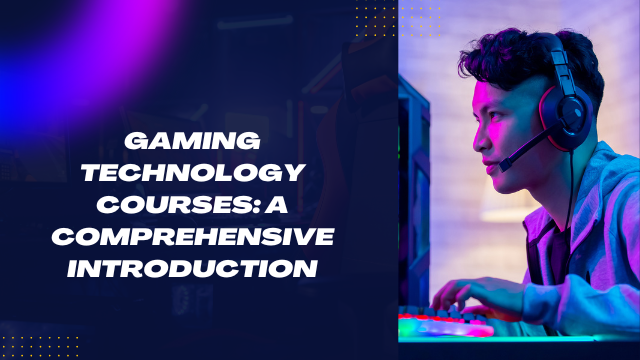Gaming Technology: Examples and Detailed Introduction

Introduction:
Gaming technology refers to the tools, techniques, and platforms used to develop, run, and enhance video games. Over the years, advancements in this field have transformed gaming from simple pixelated graphics on arcade machines to hyper-realistic experiences on various platforms. Let’s delve into some notable examples of gaming technology.
Also Read:- Gaming Technology Courses: A Comprehensive Introduction
Examples of Gaming Technology:
- Game Engines:
- Definition: Software frameworks designed to facilitate the creation and development of video games.
- Examples:
- Unity: Widely used for both 2D and 3D games, known for its user-friendly interface.
- Unreal Engine: Known for its cutting-edge graphics capabilities, used in many AAA games.
- Godot: An open-source engine gaining popularity for its flexibility.
- Graphics Hardware and Software:
- Definition: Tools and technologies used to render the visual elements of a game.
- Examples:
- NVIDIA RTX Graphics Cards: Known for real-time ray tracing capabilities.
- DirectX: A collection of APIs for handling tasks related to multimedia, especially game programming.
- Augmented Reality (AR) and Virtual Reality (VR):
- Definition: Technologies that offer immersive gaming experiences by blending the virtual and real worlds.
- Examples:
- Oculus Rift: A leading VR headset.
- Pokemon Go: An AR game that integrates virtual creatures into the real world using smartphones.
- Cloud Gaming:
- Definition: Streaming video games from servers rather than running them on a user’s device.
- Examples:
- Google Stadia: A cloud gaming service that streams high-end game titles.
- NVIDIA GeForce Now: Allows users to play games they own on various devices via the cloud.
- Haptic Technology:
- Definition: Technology that uses touch feedback to enhance the gaming experience.
- Examples:
- PlayStation’s DualSense Controller: Offers adaptive triggers and haptic feedback for a more immersive experience.
- VR Gloves: Provide tactile feedback to users, making VR experiences more realistic.
- Artificial Intelligence (AI):
- Definition: Simulates human intelligence processes in games, such as decision-making, pattern recognition, and learning.
- Examples:
- NPC Behavior: Non-player characters (NPCs) in games use AI to react to player actions.
- Game Difficulty Adjustment: Some games use AI to adjust the difficulty level based on the player’s skill.
- Motion Capture:
- Definition: Recording human movements and mapping them onto 3D models.
- Examples:
- Performance Capture in Games: Titles like “The Last of Us Part II” use motion capture for realistic character animations.
- Kinect: A motion-sensing device by Microsoft for the Xbox.
Conclusion:
Gaming technology has evolved exponentially over the decades, enhancing the overall gaming experience for players. From the hardware that powers the games to the software that creates immersive worlds, each technological advancement pushes the boundaries of what’s possible in the realm of digital entertainment. As technology continues to advance, the future of gaming promises even more groundbreaking innovations.








